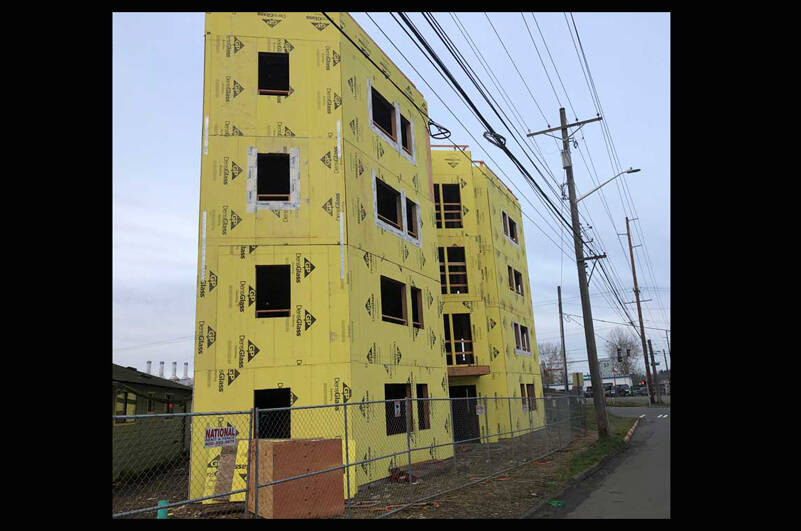By Morf Morford
Tacoma Daily Index
Nothing is more basic than housing.
Safe and reliable shelter is a prerequisite to literally everything else.
Besides being the foundation for economic mobility and generational wealth, a national affordable housing program would be an anti-poverty effort, human capital investment, community improvement plan, and public health initiative all at once.
To put it simply, home is where children (among others) find safety and security, where we find our identities, where citizenship and community engagement begins.
And none of it will happen if you don’t believe that you’re part of a community, that your presence matters.
Home is where we find ourselves
The home is the center of life – a refuge from the grind of work, pressure of school, a place where we find, discover and express ourselves.
And home, if we own it, is for most of us, the biggest single investment we will ever make in our lives, and if we are renting, it is a place we have a minimal commitment to.
But it is, for better or worse, where we find ourselves.
Affordable housing
I must admit that I’ve never liked the term “affordable housing”.
Do we believe housing is a right and that affordable housing is part of what it should mean to be a fellow human being, no matter what one’s income, age, ability or life choices might have been?
When I was a college student, I lived in some astoundingly ratty places – places that I could “afford” – but I learned very quickly what living in those places did to me.
Substandard housing was a blow to my psychological health, not only because things like dampness, mold, vermin, and overcrowding could bring about depression but also because of what living in awful conditions tells us about ourselves.
There was no way that I could do anywhere near my best and come “home” to something like that.
But, inherent to being a college student is the sense that, no matter what is going on, it won’t last long.
But I found myself along side those who did not see substandard housing as temporary – it was almost their destiny.
And I saw something else with absolute clarity- the poor don’t want a small life, forever scrambling for that next meal or dollar.
The vast majority don’t want to game the system.
They want to contribute, and they want to thrive.
And they want, far more than most of us know or would believe, their children to succeed and live honorable and productive lives.
But poverty reduces people born for far better things.
The relentless math of “affordable housing”
The standard of ‘affordable’ housing is that it should costs no more than 30 percent of a family’s income.
Thanks to rising housing costs and stagnant wages, slightly more than half of all poor renting families in the country spend more than 50 percent of their income on housing costs, and at least one in four spends more than 70 percent.
In Tacoma, about 40% of homeowners live month-to-month in “un-affordable” housing territory.
And, as you might guess, the sheer math of “un-affordability” is unforgiving.
The trajectory is clear – when people are spending 50, 70, even 80 percent of their income on rent, eviction becomes much more of an inevitability than the result of personal budgeting or irresponsibility.
We might think, if we ever think of eviction, as the result, or even condition of poverty, but it is far more than that.
Eviction, like a criminal record, stays forever.
Eviction comes with a life-time stain, and just as a criminal record can bar you from receiving certain benefits or getting a foothold in the labor market, the record of eviction comes with life long consequences as well.
Among many other things, it can bar you from getting good housing in a better neighborhood.
Eviction can ruin your credit and impact your life in ways few of us could ever imagine.
In other words, eviction is, above all else, a cause, not result, of poverty.
Sometimes the “solution” to affordable housing is worse than the problem
I’ve seen many of these “solutions” to affordable housing.
Some are almost attractive, and some, with their dedicated “affordable” units make a public case for funding or tax write-offs.
But there is something absent, or even mind-numbing about most of them.
The standard formula seems to be a single monolithic neighborhood built in the same style, at the same time, with a single institutional owner.
The front porches are symbolic, rather than functional.
The peaked roofs are attempts at mimicking traditional housing from another, more domestic, era, but the parking lots all say generic garden-apartment complex in disguise; but at a far larger scale.
The American Dream might be home ownership, but renting is far closer to the American reality.
Ownership of property has been one of the primary ways people have grabbed the first rung of the wealth ladder.
No matter how “affordable” they might be, subsidized rental accommodations don’t allow for equity.
The development of a broad white middle class was not accidental. It was the result of very specific federal programs, as in VA loans, that allowed, or even pushed, people up from landless immigrants to small scale property owners.
Even back then, there was a clear distinction between those who “deserved” a place in the economy – and equity in it – and those who did not.
The “America Dream” is, by necessity, a dream of literal equity, that should be within reach of every one of us.





